The provision of a family with living space is one of the most important indicators of the standard of living. However, it does not reflect the quality of living conditions, which many want to improve. Trying to fix the problem, some owners are carrying out major repairs in their home, in the process of which questions about moving walls, dividing a single space in a large room into several functional zones. At the same time, it is necessary to solve a number of problems related to both the approval of documentation and the choice of material for the installation of new fences. They can be built from bricks, foam blocks, drywall, use glass blocks for partitions. Let us dwell on the last of the listed building materials in more detail.
Content
- Features of glass blocks
- Advantages and disadvantages
- Material characteristics
- The main dimensions, shapes and structure of the block
- Color variety and matting
- Special purpose
- In what styles is it appropriate to use
- The use of glass blocks in the interior of rooms
- In the kitchen
- In the living room
- In the bedroom
- In the nursery
- In the bathroom and toilet
- In the bath and sauna
- DIY styling technology and methods
- Wireframe
- For solution
- On glue
- Which manufacturers' glass block is better to choose
- How to care for glass block partitions
- Conclusion
Features of glass blocks
Glass blocks appeared on the construction market not so long ago. The first prototypes were produced by the American company Luxfer Prism Company, founded in 1886 by James Pennicuik. However, the invention patented in 1885 differs significantly from the brick blocks that have been used in construction since the 30s of the 20th century. The product was a metal lattice filled with square glass tiles.
The building material was used in different countries, and the peak of its growth in popularity fell on the 60s - 70s of the twentieth century. Initially, the blocks were used to illuminate basements, but over time they began to be installed in many institutions. Those who have found the Soviet era remember the decoration of schools and kindergartens, swimming pools, staircases, made with the help of this raw material.
Glass block is a building material that is obtained by joining two pressed glass plates. Thanks to the qualitative and aesthetic improvements of this product, a significant increase in the range, architects and designers began to use it not only for the exterior decoration of buildings, but also in the arrangement interior. Partitions are erected from them, inserts are made into the walls.
The main feature of a building material is not its decorative qualities, but its ability to save energy. Another important characteristic inherent in the product is the light transmittance coefficient. Products can transmit light, diffuse, direct it, while completely hiding everything that is behind them. Some grades are comparable in strength to brick, and even to stone.
The structure erected from glass blocks is characterized by tightness, it creates good thermal insulation, noise insulation, light transmission, and provides protection from the cold. This allows us to make living conditions more comfortable, which is important both for large cities and for cottage settlements.
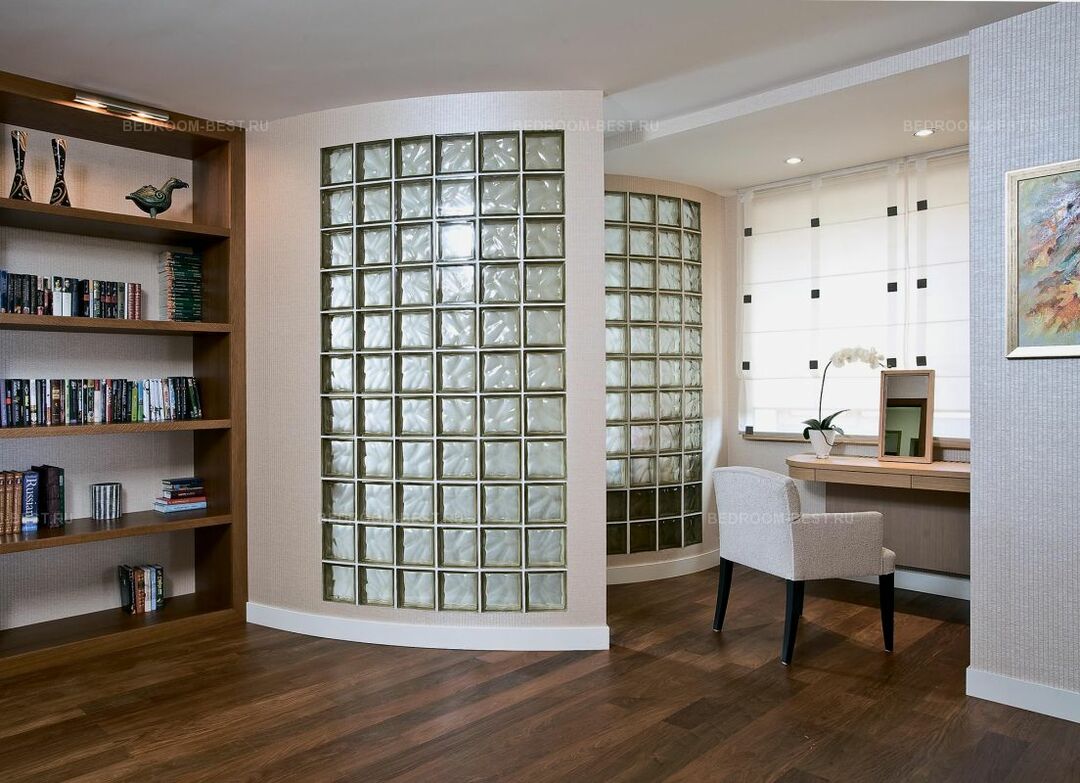
Advantages and disadvantages
Glass block can be called a kind of hollow brick, which, unlike the original, is made not from clay, quartz sand or limestone screenings, but from glass. The material is widely used in construction, due to a number of useful properties inherent in the finished product. Among the main advantages of the products in question, the following aspects can be distinguished:
- Strength. Building material is almost impossible to break. It can withstand mechanical stress, including shock and compression.
- Durability. The service life is at least 15 years. At the same time, the products are not afraid of the action of direct sunlight, even the colored versions will not lose their original appearance under the influence of ultraviolet radiation.
- Range. Manufacturers produce a wide variety of blocks that differ in shape, size, surface texture, and have a wide range of colors. This allows you to bring to life any design ideas, both when creating an exterior and when organizing an interior.
- Scope of application. Glass blocks are used in chemical and food industries, in medical institutions, in laboratories, in the construction of private houses, public buildings, in other areas.
- Easy care. Ready-made structures are easy to maintain. Glass does not absorb dirt and is inert to chemicals. Dirt is easily cleaned from the surface. The ingress of dust into the internal cavity is excluded.
- Light transmission. Glass elements let light into the room well.
- Easy assembly and disassembly. It is possible to erect a partition from glass blocks with minimal construction skills, and to replace a damaged element, you will not need to completely disassemble the masonry.
- Noise isolation. Glass blocks have good soundproofing characteristics, which allows them to be used in load-bearing walls.
- Moisture resistance. Glass is not afraid of moisture, it does not absorb water, it is not afraid of condensation, therefore the material is used in the construction of partitions for bathrooms.
- Fire resistance. Products are classified as non-flammable substances. Able to withstand exposure to an open flame for an hour.
- Heat resistance and frost resistance. The blocks can withstand drops of up to 40 ° C, and a temperature range of -40 to + 500 ° C.
- Thermal insulation and energy saving. They retain heat well inside the room, which allows you to save on heating. In the heat, hot air is not allowed inside, keeping the room cool.
- Environmental friendliness. In the production, natural ingredients are used that ensure the ecological purity of the product.
Of the minuses of glass blocks, it can be noted:
- Complex handling. The block is hard to cut into pieces. It is almost impossible to make a hole in it, it can burst under pressure.
- Great weight. Partitions assembled from these bricks make the entire building structure much heavier.
- Air permeability. The material does not allow air to pass through. This must be taken into account in the case of arranging a window opening, consider the method of ventilation.
- Price policy. Finished products are expensive compared to other building materials used for construction and decoration.
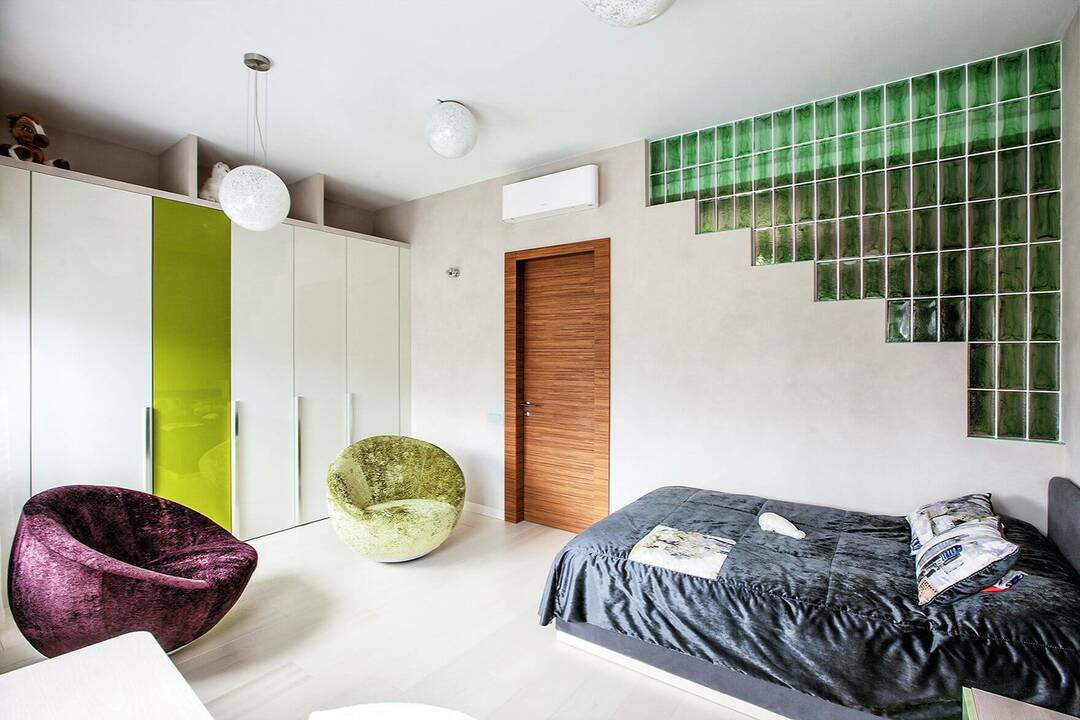
Material characteristics
Glass blocks can be classified according to several parameters. First of all, attention should be paid to the country in which the products were manufactured. On the construction market you can find German, Italian, Czech, Polish, Russian, Chinese products. They all have the same design, their sizes are the same. The difference is only in quality and price. In addition, all blocks differ from each other in the following ways:
- shape and dimensions;
- glass thickness;
- texture, color and filling;
- strength and resistance to stress;
- optical characteristics;
- area of application.
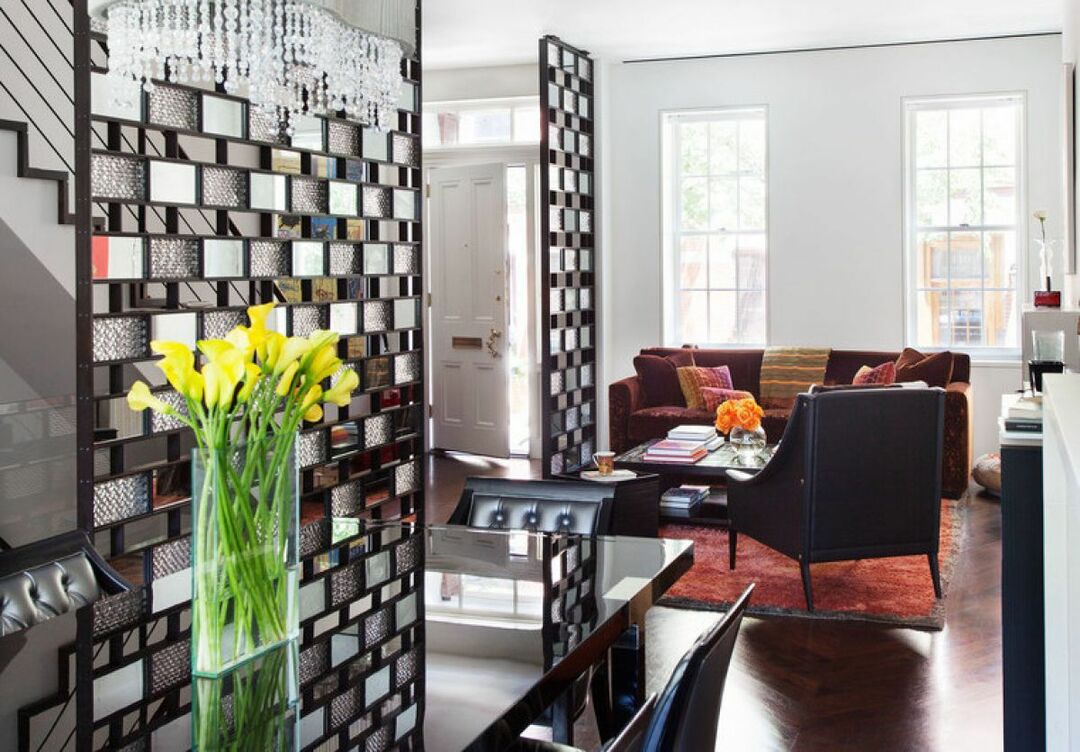
The main dimensions, shapes and structure of the block
To understand the structure of a glass block, just look at its definition. It follows from it that a block is a product obtained by joining two pressed glass plates, between which a hermetically sealed cavity is formed. According to GOST 9272-81 p. 2.4 the thickness of the front walls shall be more than 8 mm. Here in p. 1.1 Table 1 shows the standard dimensions and weight of the finished product.
According to the GOST discussed above, glass blocks can have a square and rectangular shape. The size of the former should be (length, width, thickness, in mm) 194x194x98, 244x244x75 and 244x244x98 with a mass of 2.8, 3.8 and 4.3 kg, respectively. The second - 294x194x98 mm weighing 4.2 kg. Upon agreement with the consumer, it is allowed to reduce the length and width by 10 mm downward.
Manufacturers offer a wide range of finished products that can have non-standard dimensions. It all depends on the form. The smallest products have indicators of 115x115x80 and 60x146x80 mm, and the largest ones are 300x300x100 mm. Triangular models are available in only one size 172x172x236x80 mm. But the most important thing is that all countries that produce designs adhere to uniform standards.
The standard type of products is a square and a rectangle. There are also more refined models in the form of a triangle, rectangle, circle, hexagon, L-shaped, with rounded side edges. There are also exclusive options that are made according to individual sketches to order; special matrices provided by the manufacturer of figured glass blocks are used for their installation.
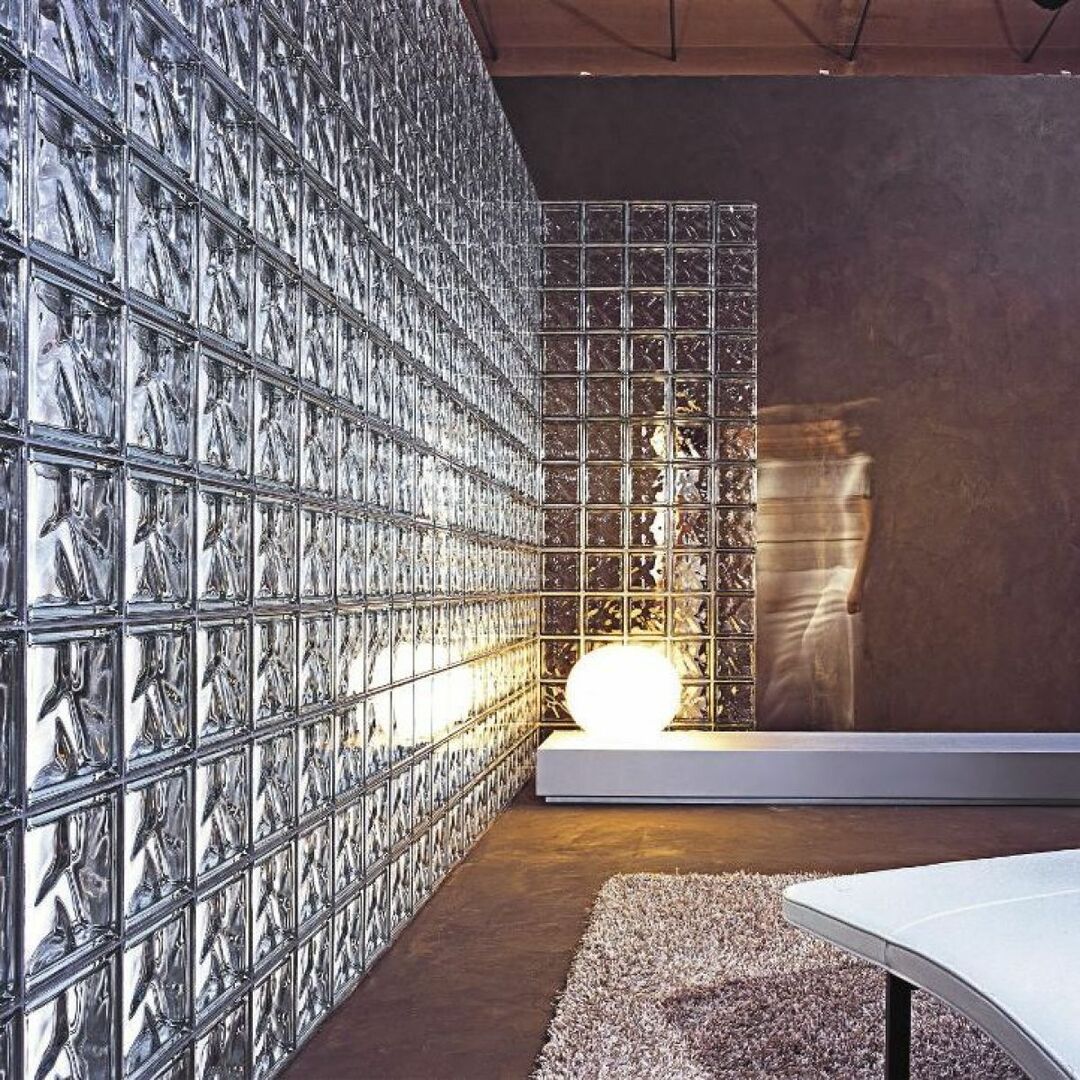
Color variety and matting
All glass blocks can be divided into transparent and colored. Referring to GOST 9272-81, one can understand that products can be painted or unpainted. The first of those listed in accordance with cl. 2.1 can have a yellowish, bluish, greenish tint, which does not reduce the light transmittance. In p. 2.3 states that the color and embossed pattern must correspond to the reference samples.
Colorless and colored models can be distinguished according to the color palette. In addition to the standard color in green, yellow, red, blue, bricks can be found on sale with a huge range of shades. Coloring is done in two ways. The highest quality products, which are not afraid of temperature changes, sunlight, are obtained by adding dyes to the glass mass before molding.
Glass blocks, which were made of transparent glass, painted in the vacuum part (from the inside), are used exclusively inside heated rooms. Under the influence of ultraviolet radiation or as a result of a sharp change in temperature, the paint begins to crack, fade, and fade. When choosing a specific model, it is worth considering the fact that multi-colored blocks transmit light worse.
For matte structures, the light transmittance is 30-50%. Due to the scattering effect, they create a high degree of protection, therefore, they are used in rooms with unwanted light access from outside. Semi-matt options are blocks in which one side is matte and the other is normal. A partition made of such bricks visually seems to be illuminated from the inside.
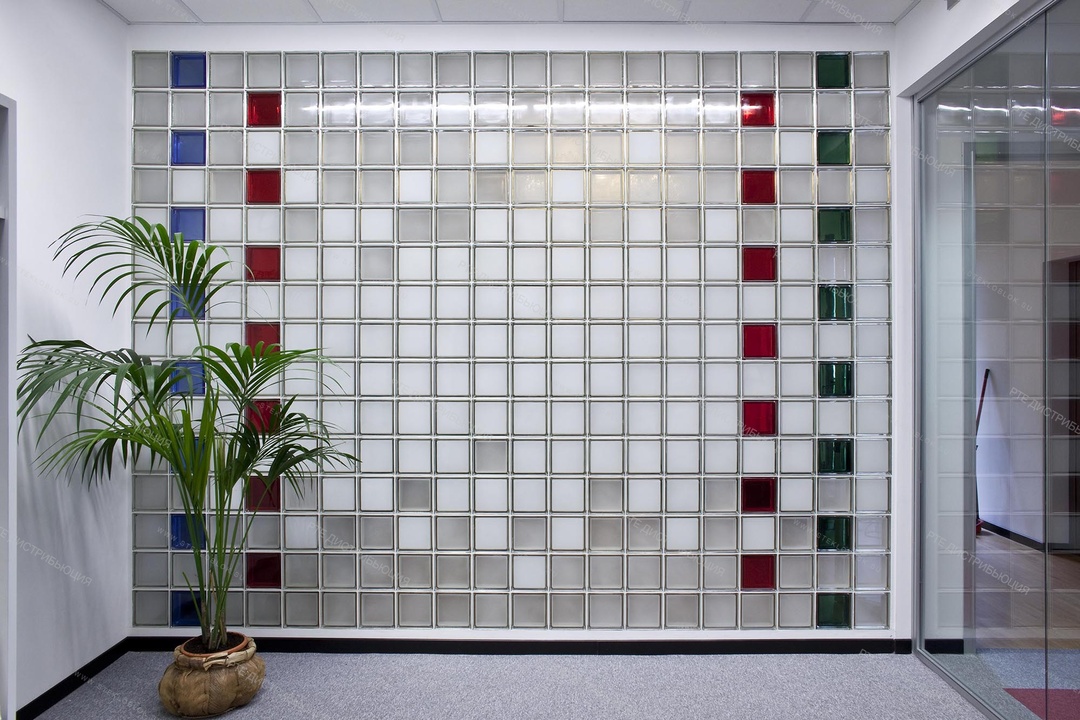
Special purpose
Depending on the scope of application, all glass blocks can be divided into industrial, interior and decorative models. The first ones are characterized by increased indicators of strength, water resistance, fire resistance. This is the cheapest type of glass bricks. They are used in production workshops, public institutions and institutions, when organizing staircases, for other purposes.
Interior blocks are used for decoration of residential and office premises, although they can also be used in the exterior. It is the most demanded material that maintains a balance between price and quality. Glass blocks are characterized by a wide variety of shapes, sizes, colors and textures. They are used to build partitions, windows, floors, make inserts into the walls, and even furniture, for example, lay out a bar counter.
Decorative models contain various patterns and designs inside them. Shells, pebbles, toys, dummies of fruits, models of ships, etc. can act as objects placed inside. This is the most expensive kind. Most often they are used as an addition to conventional glass blocks. To decorate the space, to emphasize a certain design, a few bricks are enough.
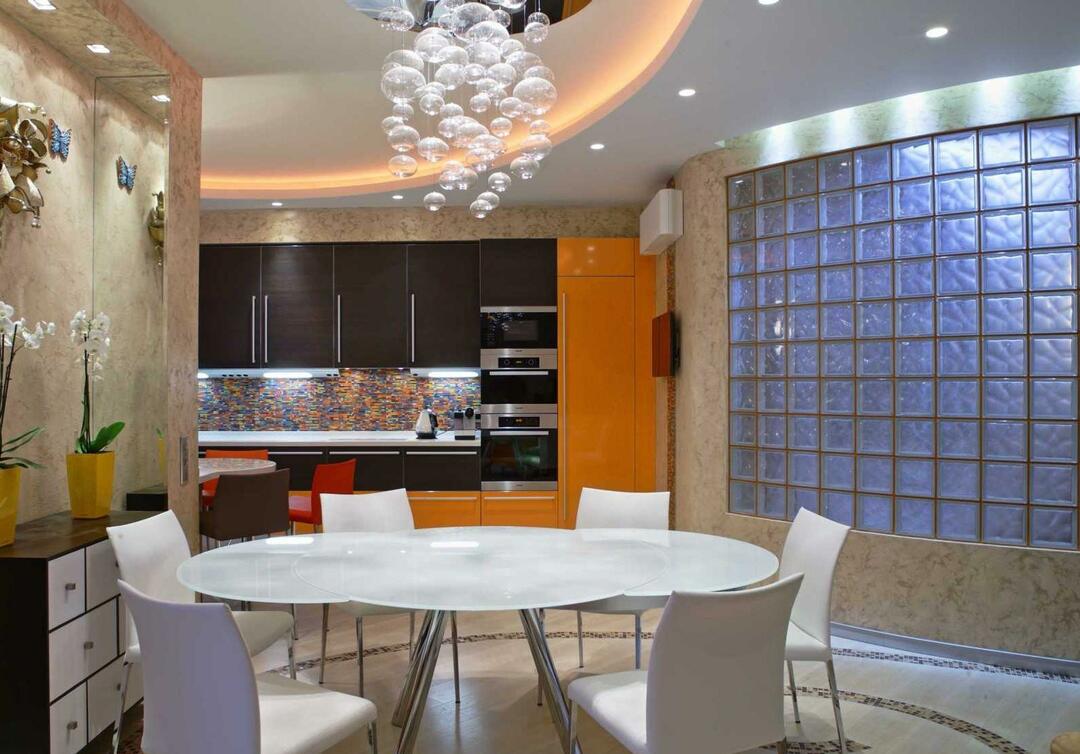
In what styles is it appropriate to use
Excellent properties of glass blocks, a huge variety of colors, makes it possible to bring to life the most daring design ideas. With the help of the material, you can create interesting compositions that complement the interior, decorated in a modern style, such as high-tech, urbanism, pop art, constructivism, loft, modern. For the Art Nouveau direction, stained glass models are ideal, which will also be appropriate in oriental stylizations.
In classical directions, it is better to refuse glass bricks. The classics do not tolerate such a combination, this applies to the Baroque, Renaissance, Empire, and others. Also, the material will look out of place in interiors decorated in a rustic and natural style, for example, eco, country, Provence, chalet, rustic. If you do not have professional knowledge, it is better not to take risks and turn to experienced designers.
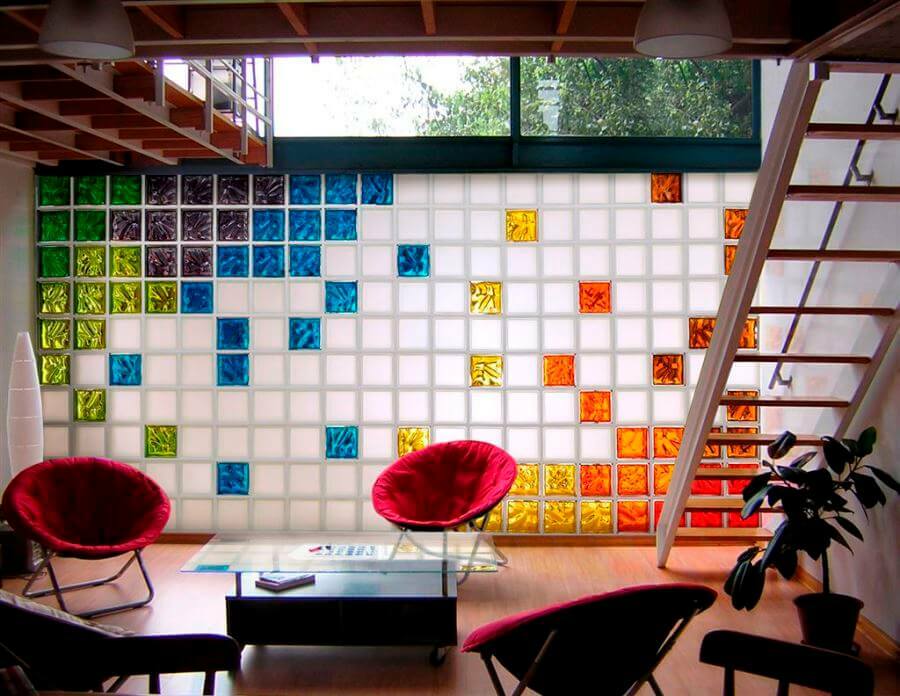
The use of glass blocks in the interior of rooms
Excellent soundproofing material is often used as decoration and decoration of premises. With their help, you can beat any corner of the room, mask the flaws in the layout and emphasize the advantages. Glass blocks of any type and design have excellent heat-saving properties and are resistant to moisture. Translucent cubes are suitable for creating partitions, original racks, window openings. When choosing suitable elements, one should take into account the purpose of the room, its design and dimensions.
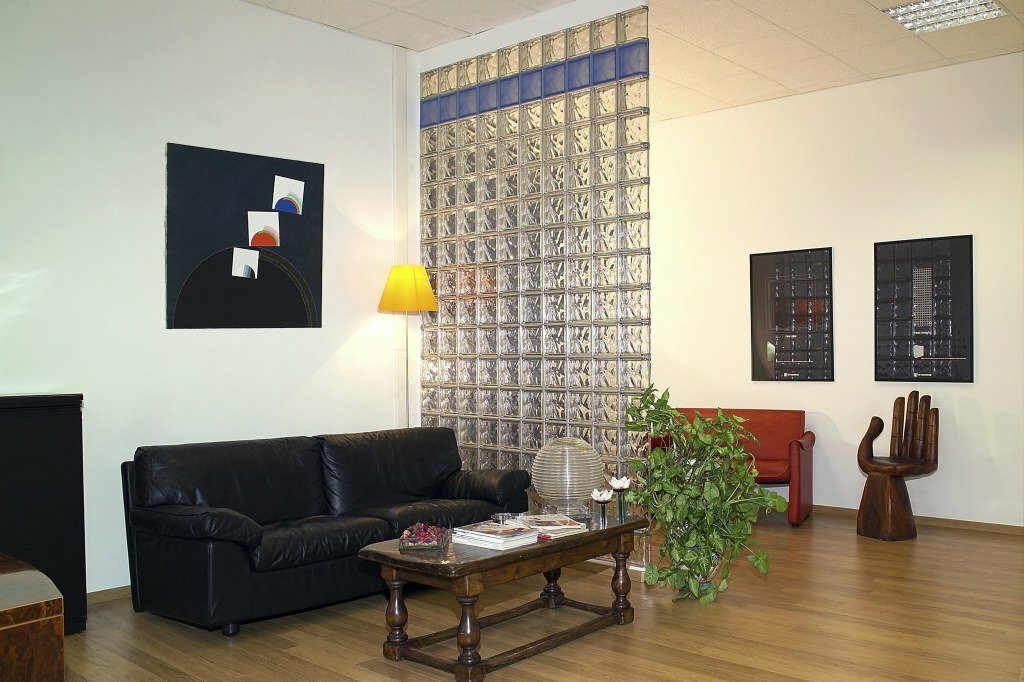
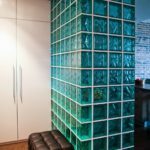
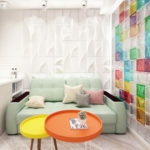
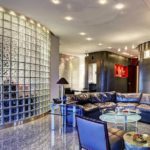
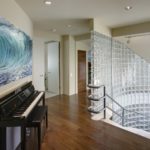
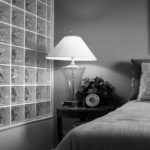
In the kitchen
Most often, glass blocks in the kitchen are used to separate space. A beautiful matte partition in the color of the finish will be a good solution for dividing the dining room and the cooking area. The practical design of the same squares is easy to clean, does not absorb odors and retains an attractive appearance for a long time.
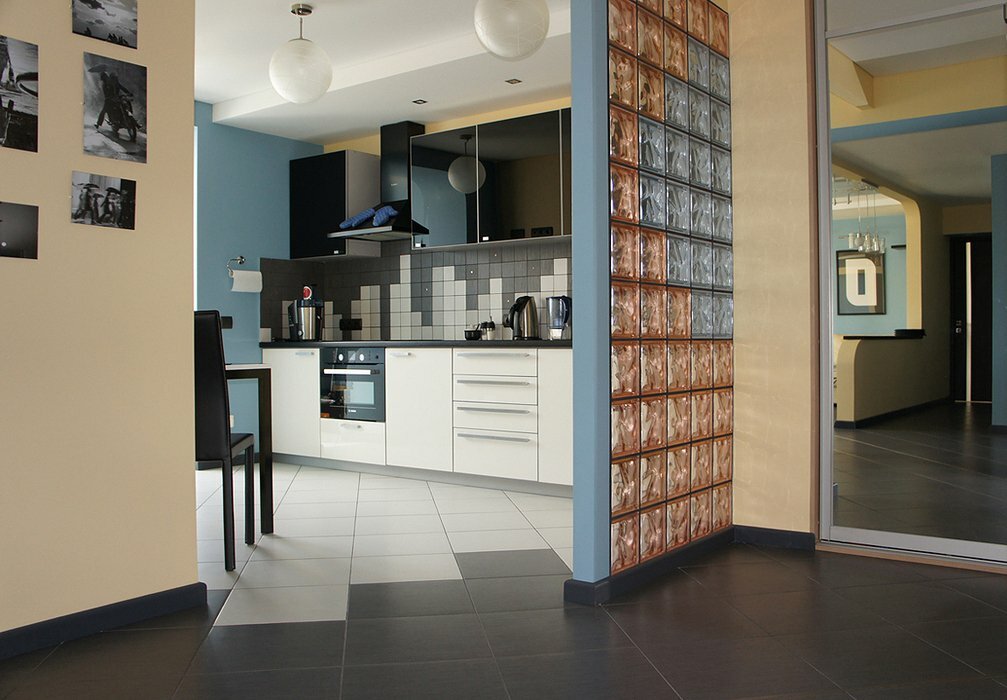
When choosing such partitions in the kitchen, it should be understood that they can perform an exclusively decorative function. It will be impossible to load them with decor, pieces of furniture, to mount heavy structures to them.
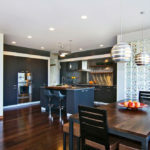
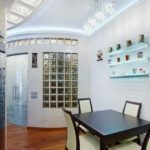
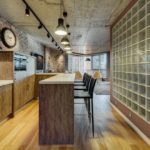
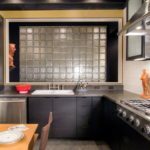
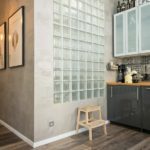
In the living room
With the help of practical modern material, you can create great decor that will become a real work of art. Glass squares are installed along one of the walls of the living room, along the perimeter of the windows, next to the interior partition. The multi-colored blocks laid out according to the planned scheme will become the highlight of the interior.
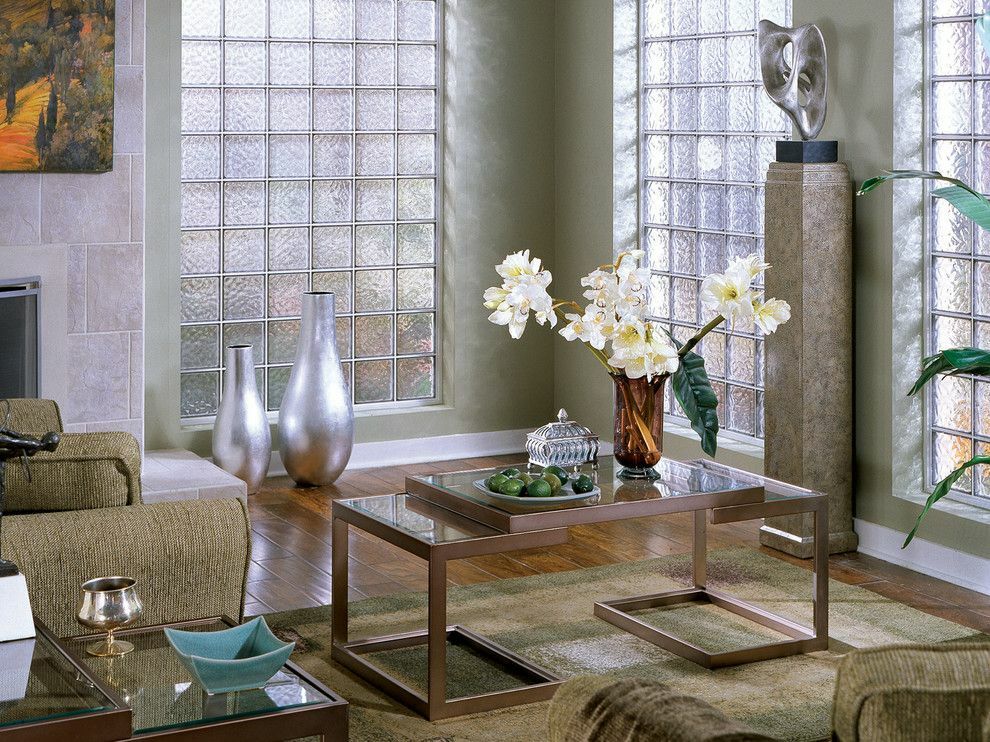
The partition in the form of translucent bricks of different textures will look beautiful in the hall or hallway. Iridescent details will create an atmosphere of comfort, provide good sound insulation. Even colored elements can be installed near the window, since the glass blocks allow 90% of the sun's rays to pass through and will not obscure the space.
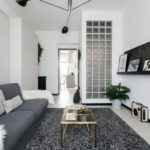
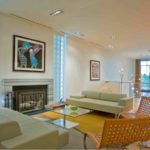
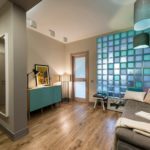
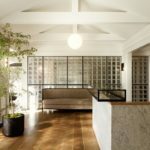

In the bedroom
Translucent partitions in the recreation room will create an atmosphere of relaxation and relaxation. You can achieve the best effect by using warm shades, the correct geometric shape, and special lighting when decorating. In large rooms, glass blocks can be an excellent zoning solution. They are used to separate the sleeping and reading areas, to fencing off a stylish dressing room.
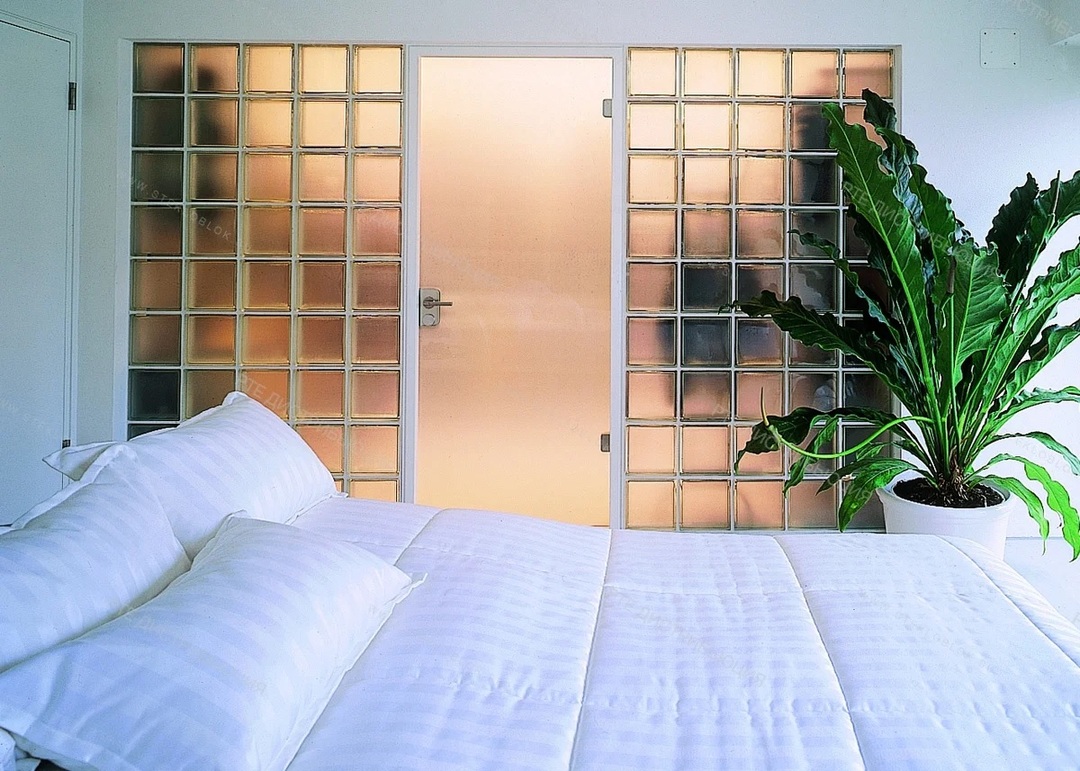
By installing a partition of colored squares near the window in the bedroom, you can get soft diffused lighting, suppress unnecessary noise from the street. It will be pleasant to be in such a room at any time of the day.
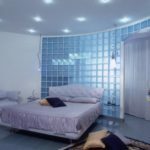
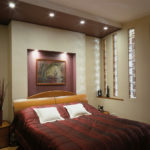
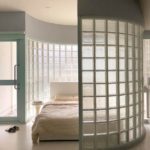
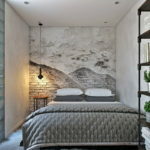
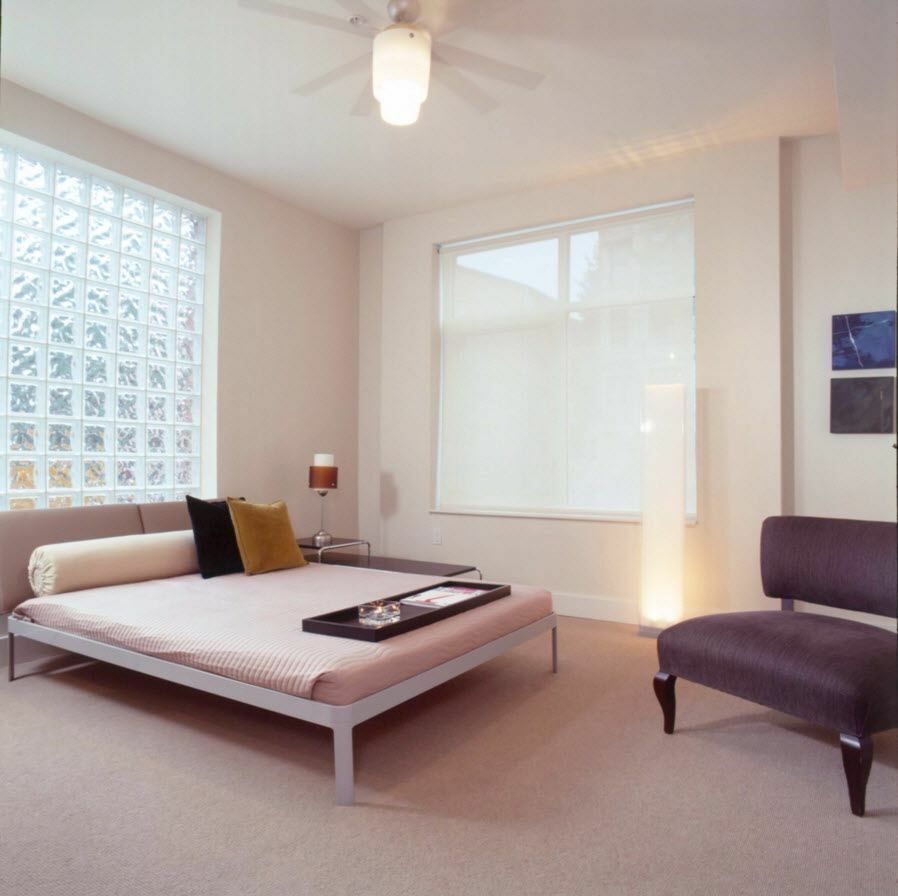
In the nursery
A wide range of textures allows you to use glass blocks in a child's room. For the arrangement of the premises, multi-colored squares and rectangles are chosen. You can choose products with unusual effects, creating the feeling of a fairy tale.
A multi-colored panel with sealed cartoon characters inside each element will look original in the nursery. Low block structures are used to divide the space, fencing off the recreation area from the playroom, and installing lamps next to it.
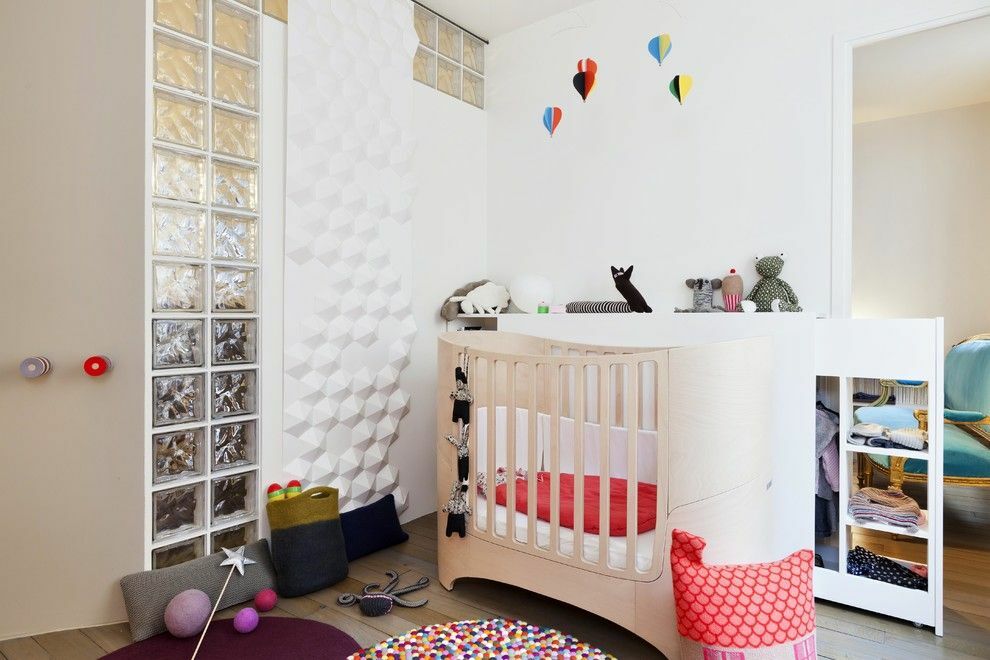
In the bathroom and toilet
When decorating a bathroom or a booth with glass blocks, they can be used in several versions. Design methods can be combined or applied to a specific one. For dark walls, the actual solution would be to finish surfaces with squares with transparency. So you can reduce energy costs, effectively divide the bathroom.
If you replace one of the walls or part of it with glass block decor, you can visually expand the space. Due to the penetration of light from neighboring rooms, lighting will significantly improve. In small rooms, it is better to use details of the same texture and color.
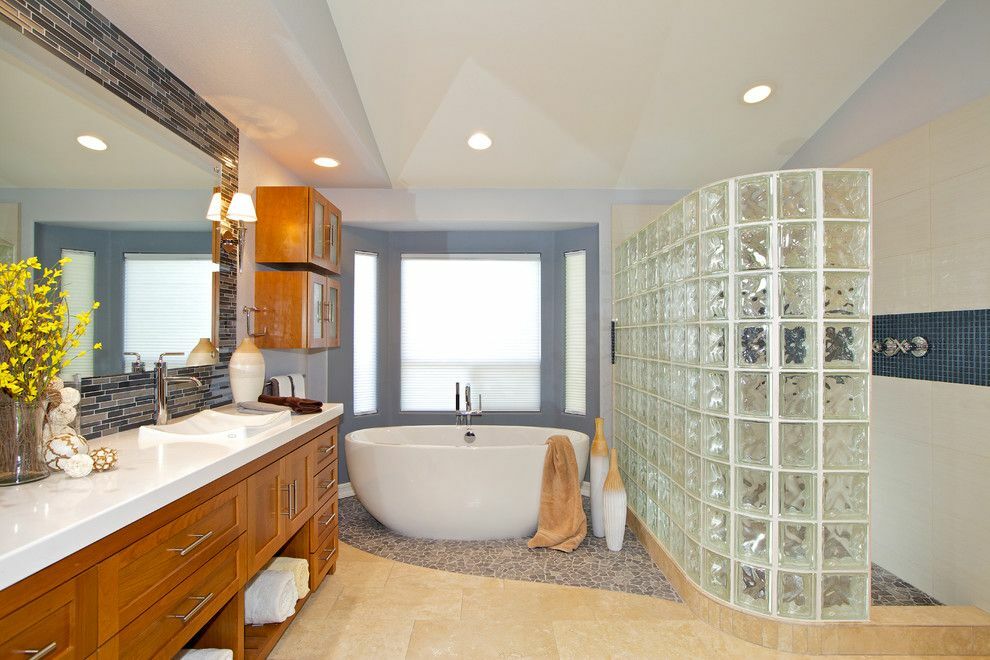
Installation of partitions made of glass blocks in an apartment is an ideal solution for a bathroom and toilet, shower. Translucent details do not constrict the space, they do their job well. They can be used both in an adjoining and in a separate bathroom. Blocks are assembled in continuous rows or combined with drywall, brick, wood.
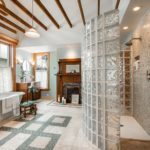
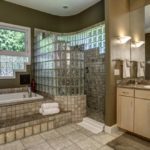
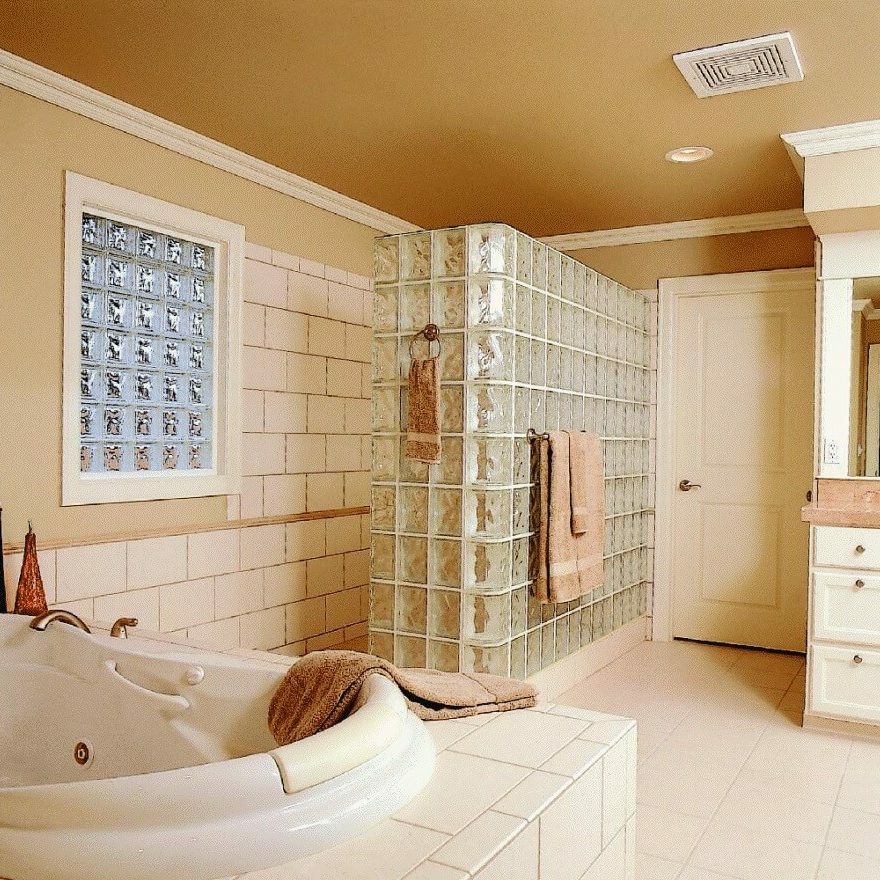
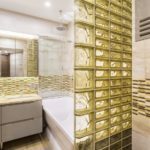
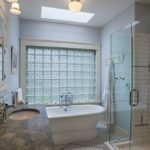
In the bath and sauna
Decorating such rooms with glass block partitions will make them original and unique. In this case, all the defining functions of a bath or sauna will be observed in accordance with generally accepted standards. The main useful characteristics of block finishes include water resistance, resistance to temperature extremes, and excellent thermal insulation.
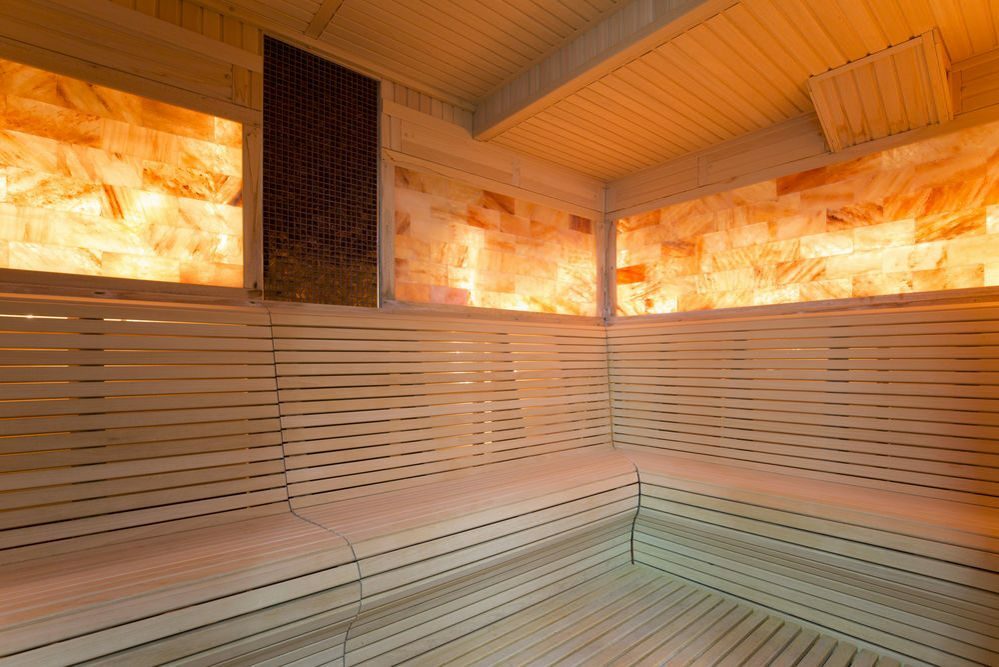
Glass blocks are often used as a partition, delimiting the shower and sauna zones. Decorating the walls with such elements will also be an excellent solution, since they take up much less space than other options from other materials.
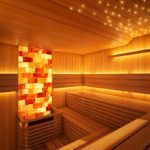

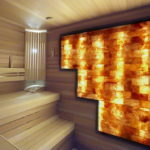
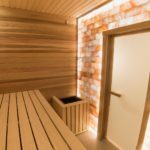
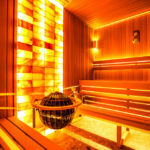
DIY styling technology and methods
There are several ways to mount glass blocks. Choose the appropriate option based on the size of the partition itself. It should be understood that the elements cannot be trimmed, therefore, before purchasing materials, it is necessary to study the products of several manufacturers. For decorative blocks with a pattern, you will first need to make a scheme according to which in the future to lay out all the elements on the floor.
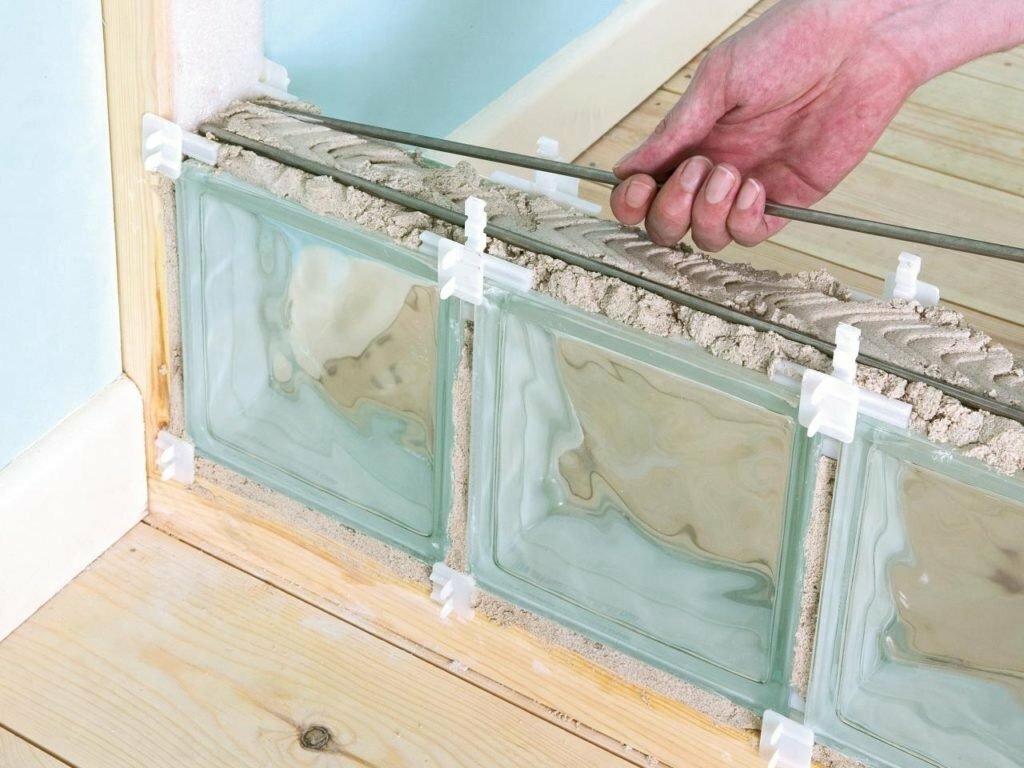
Wireframe
The method is suitable for creating light, small-sized structures. More often these are half-partitions for zoning. The strength indicators and soundproofing qualities of the structure in this case will be much lower than when assembled using other technologies.
The main advantage of the frame assembly of glass blocks is aesthetics. Also a plus is the ability to replace elements and cleanliness of work. A wooden frame is used as a basis. The design with cells for the size of glass parts resembles a lattice or shelving.
First of all, the frame is fixed on the base. It is screwed to the floor, wall with dowels or anchors. Special rubber gaskets are put on the glass blocks and inserted into the cells of the frame or a ladder. To give strength to large structures, a sealant is used.
If it is necessary to give a certain color to the wooden structure, it must be painted in advance.
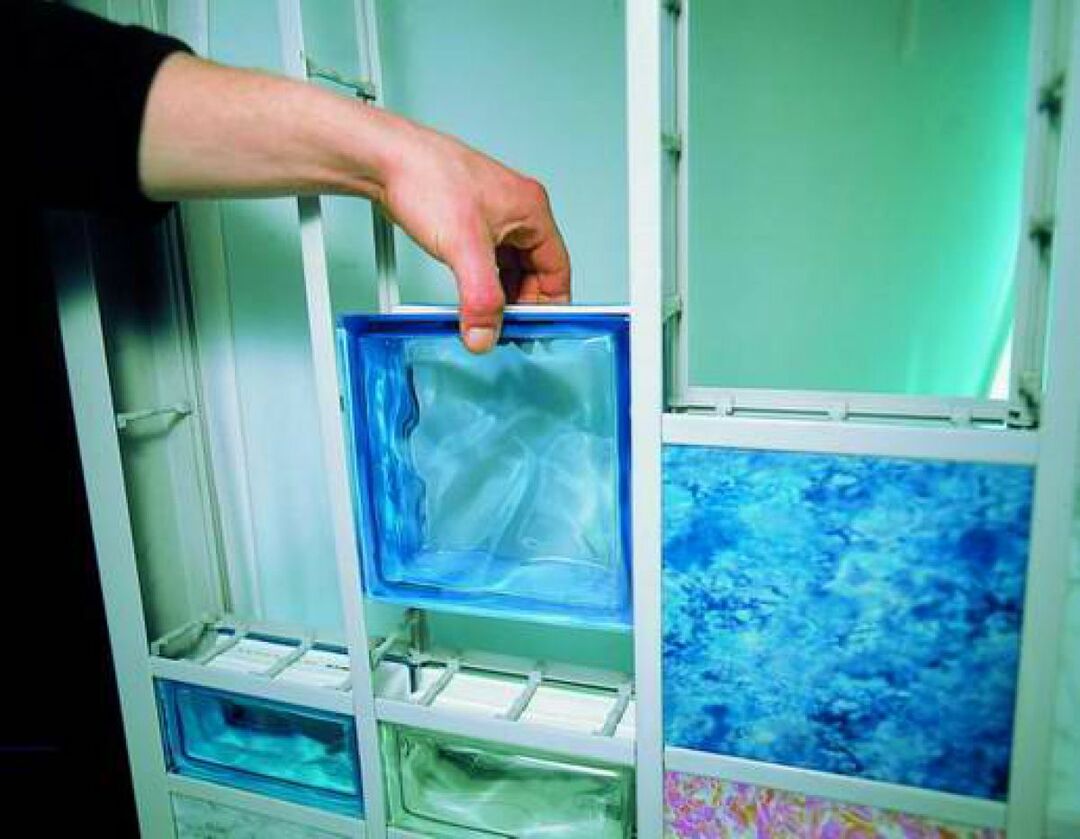
For solution
Cement is used as an adhesive mixture. It should be uniform without large grains of sand that can scratch the glass. You will also need to purchase crosses to install between the blocks of a fixed distance and give rigidity. Reinforce the glass wall with metal rods.
After the row of glass elements has been laid, a new layer of cement is applied and the metal rod is laid horizontally. If the construction area is large, additional metal supports are installed vertically. It is recommended to lay no more than three rows of glass blocks at a time. To prevent the structure from falling apart, the cement mixture must be allowed to dry for at least a day.

On glue
A wooden frame is used as a basis. It is cleaned of debris, dust and basic markings are applied. To determine the required distance on the panel, lay out blocks and plastic dividers. Then they measure the length and height of the future structure, calculate the dimensions of the frame. If in the future it will be attached to the wall structure, holes must be drilled in certain places.
For laying transparent elements, white tile glue is used. So the seams will be more aesthetic, and the likelihood of staining the part is minimal. To begin with, they check the integrity of the glass blocks, since manufacturers guarantee the quality of the elements only until they are installed. Then they are laid in rows, laying reinforcement for the strength of the structure.
It is not recommended to remove the protective film from the glass blocks during installation. This will help keep them safe from damage. If it is not provided, polyethylene should be applied, securing with paper tape.
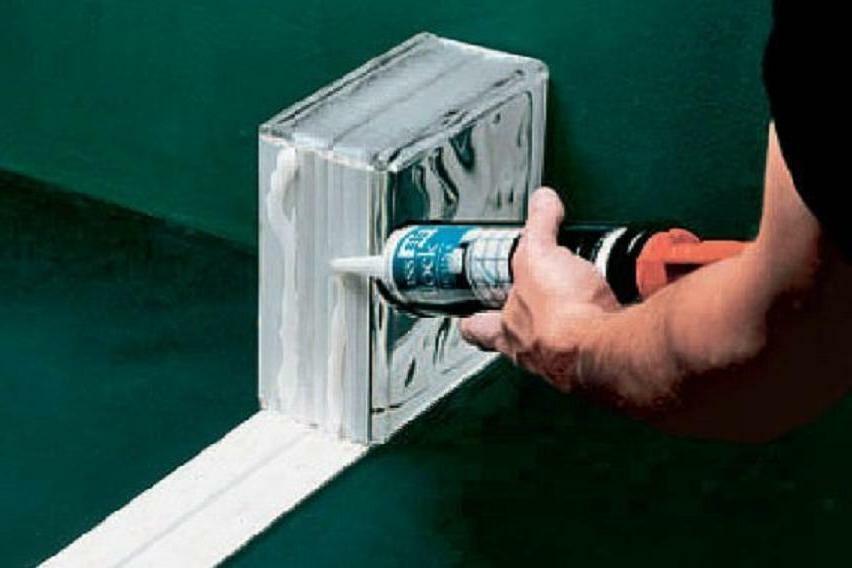
Which manufacturers' glass block is better to choose
The correct choice of glass blocks is an important point when assembling a decorative structure. The assortment of such elements is diverse. You can buy products from domestic, Czech, Italian manufacturers. Each version of glass blocks will have special characteristics:
- Domestic. Affordable price and high quality makes such parts the most demanded on the market.
- Italian. They stand out for their special color tone difference from other manufacturers. All blocks have perfect lines.
- Czech. They occupy leading positions in terms of production. They stand out for a wide variety of patterns and unique colors.
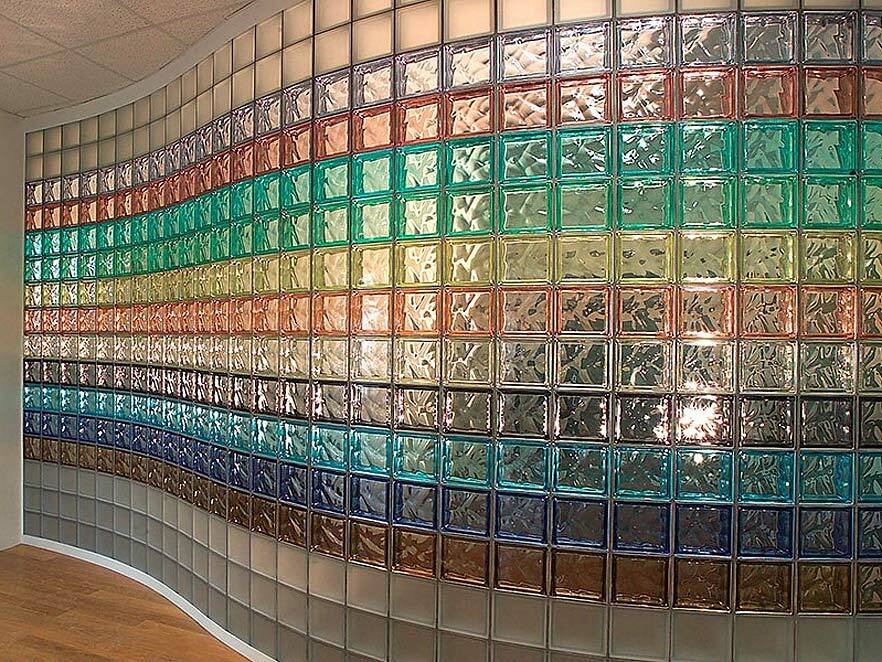
How to care for glass block partitions
Partitions made of glass blocks do not need special care. It is enough to wipe them with a damp cloth. Special wipers are used as additional cleaning. It is not recommended to use household chemicals with abrasive particles and hard sponges.
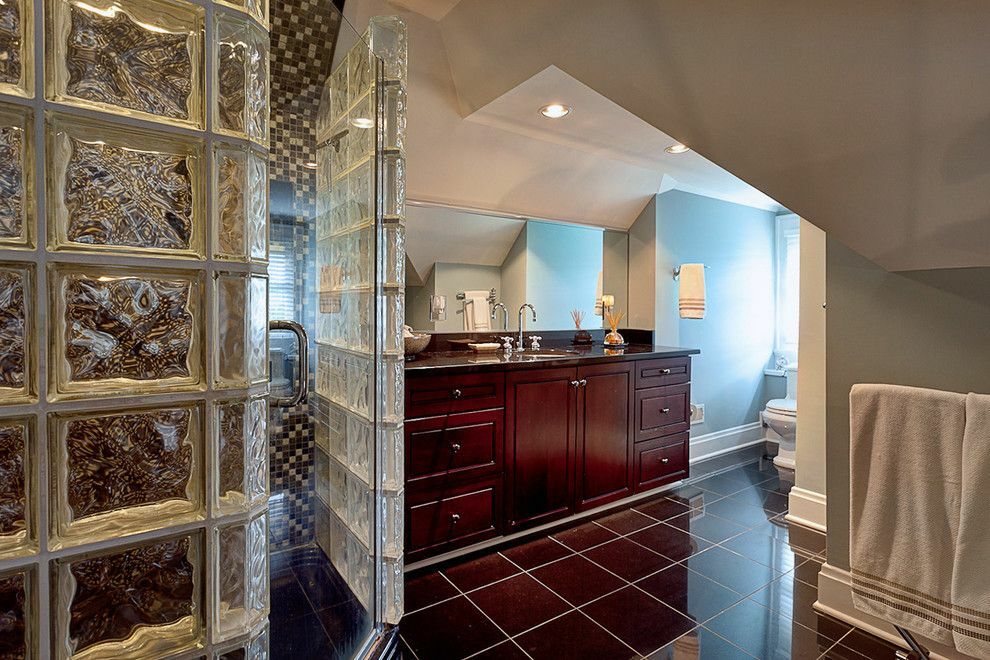
Conclusion
Do-it-yourself sealed glass structures will help not only diversify the interior, but also provide complete protection of the space from noise and dust. Affordable price and ease of installation according to the photo makes partitions from blocks more profitable in comparison with plastic panels and solid glass structures.



